Mumbai
Despite spending a year and a half living in India, I only ever managed to spend one full day in its Maximum City of Mumbai. Sure, I saw the interior of Mumbai’s airport terminal several times, but it was on my third time to the subcontinent’s biggest city that I had the time to venture out for a complete twenty four hours…
The word which kept coming to my mind was ‘astonishing’. To begin with, it is huge. Not in size – it’s only around the same size as Sydney. It’s huge in population – estimates vary between 16 and 22 million, and truth be told, no-one is really sure, because there are just so many people. Consider the higher estimates; if Mumbai alone were to break away from India, its population would still be greater than Australia’s. Understandably, with so many people crammed into such a small area, traffic is diabolical. Not erratic, not scary, but there’s just so much of it – traffic jams are the norm, and it’s common to spend an hour travelling three or four kilometers – at any time of day (including the hours between midnight and dawn). After negotiating the traffic, I checked in at the luxurious ITC Grand Central. After negotiating more traffic, I met some friends who put on a Mumbai street food spread. Mumbai is famous for its street food, widely considered to be the tastiest and most diverse in India. We ate pav bhaji; a sort of veggie burger made with lentils, tomato and fluffy rolls, samosas; deep-fried pasty triangles stuffed with mashed potato and peas, and vada; fried gram-flour dumplings which were invented in southern India but perfected in Mumbai.
The next day I had my opportunity to ‘do’ Mumbai in under twenty-four hours. In 1996, Bombay changed its name back to Mumbai, which was the original Marathi name for the fishing settlements in the region. It was originally seven islands in a marshy bay, until the British envisaged an imperial metropolis in the 1800s. Throughout the 1800s, the spaces between the seven islands were dredged and reclaimed to form one large island. The names of the old islands became the names of new suburbs on the massive new isle. Much of the land on which Mumbai is built, until 150 years ago, never existed. Astonishing. Even more astonishing is the idea that up to 22 million people have flocked to the reclaimed city in the past century and a half. Then consider the floods which affect Mumbai each monsoon (July), although most destructively in 2005 – the floods are much more understandable when one considers that the topography of the entire city was man-made more than a century ago. 60% of Mumbaikers live in slums – one of the highest percentages of an urban population in the world. Astonishing. Many of them hold down office jobs, albeit not high-flying ones. Although New Delhi is India’s political capital city, Mumbai is the economic, entertainment and cultural capital. It is easily the most cosmopolitan city in India, and the most outward looking. Mumbaihas long been a city of dreams and dreamers – excessive money and grinding despair. All of that considered, and the seaside setting, Mumbai occasionally reminded me of Sydney, but truth be told its radically, radically different.
My first stop on Thursday was Haji Ali Dargah, a mosque and tomb of a local saint who is venerated by local Muslims, and even some of other religions. What makes Haji Ali Dargah special is that it was built offshore, and is linked to the city by a causeway which becomes submerged during high tide. Visitors can go at low tide (as I did), but during high tide the mosque becomes an isolated vessel of devotion. Nearby, I visited Dhobi Ghat, the world’s largest laundromat. There, in a veritable human-powered washing machine, hundreds of men (and a few women) wash, beat and dry 500,000 clothes every day in the open air. Astonishing. I stood on a nearby road bridge and watched them going about their work – the scale of the operation was truly amazing. There’s a really good arthouse movie called Dhobi Ghat (known as ‘Mumbai Diaries’ in English), which depicts a man’s life in the washing trenches. Mumbai, of course, is home to Bollywood (a portmanteau of Bombay and Hollywood), which is the world’s largest film industry – yep, even bigger than America. Bollywood churns out 3000 movies a year, which is about 57 a week, which is also astonishing. Interestingly, modern filmmakers in India don’t like the term ‘Bollywood’ – they say it makes Mumbai sound like a rip-off of LA. Instead, they prefer to call it the ‘Hindi Film Industry’. Although their cause is noble, it doesn’t look likely to succeed any time soon.
From Dhobi Ghat, I headed to Colaba, the colonial heart of Mumbai, home to the Gateway of India (different to India Gate, which is in Delhi), and the Taj Mahal Hotel, which became the focal point for the
2008 terrorist attacks. The hotel has been completely refurbished – in fact it reopened for business just a couple of days after the attacks. However nearby is Leopold Café, popularized in the book Shantaram and frequented by foreign backpackers, which was also attacked by gunmen. On the inside the management have preserved the bullet holes in the wall as a memorial to that terrible night. Just up the road I passed Chhatrapati Shivaji Terminus, previously known as Victoria Terminus, Mumbai’s main railway station, and a central location in 2008’s film Slumdog Millionaire (which, it should be noted, wasn’t a ‘Bollywood’ film – it was set in India, with Indian actors, but it was ultimately a British production). The huge colonial edifice is imposing, and the station itself is frenetic. People everywhere; businessmen, beggars, taxi drivers, police, armed guards, train drivers, chai-wallahs, students, housewives, labourers… It’s easy to see why it was picked as another target for the 2008 shooting attacks.
It’s easy to think of Mumbai as a troubled city, but it wasn’t always so. Until the 1980s, Bombay was considered the pride of India – a cosmopolitan, modern city that exemplified what India could be, and home to people from all over the nation. However conservative sections of the original inhabitants of the city soon grew tired of what they saw as an Indian invasion. Fed up with the influx of Hindi-speaking Indians (the natives speak Marathi, a different language), they elected the extremist right-wing Shiv Sena party to local government in 1985. They gained quick support by blaming increasing crime, underworld gangs, red-light going ons and other social ills on non-locals. ‘Shiv Sena’ roughly translates as ‘God’s army’, and they began discriminating against non-Hindus, particularly Muslims who make up 19% of Mumbai’s population (according to some estimates). Tensions soon boiled over, and in 1992 riots broke out, in which 575 Muslims were killed, mostly by Hindu mobs (this incident was portrayed in the beginning of Slumdog Millionaire). The backlash was harsh – in March 1993 a Muslim terrorist group with connections to underworld gangs set off 13 bombs around Bombay, killing 325 Hindus. The Shiv Sena party was behind changing the name from Bombay to Mumbai (they objected to Bombay being a foreign name), and renaming landmarks, like Chhatrapati Shivaji Terminus which used to be called Victoria Terminus. (Chhatrapati Shivaji was a Marathi-speaking freedom fighter who battled – you guessed it – the Muslims). It’s yet to be seen if Mumbai can recover the glory that the name Bombay once conjured up.
I spent my afternoon in Mumbai on Chowpatty Beach, watching the sun set on a beautiful and intense city. The sunset was as vibrant as the city itself had been. The day had been short and sweet – and much like the zesty street food which my friends had served up the night before, the taste passed, but the sensation lingered long afterwards. I hope I can one day return to Mumbai, “Maximum City”, the astonishing city, for much longer.
When to go
Go between November and March, when the temperatures are more tolerable and it’s less likely to rain.
Difficulty
Culture shock: 7/10
Language: 4/10
Food: 3/10
Comfort zone: 2/10
Physical demand: 2/10
Advice and warnings
Despite having a reputation for communal violence and international terrorism, Mumbai doesn’t feel particularly dangerous. Statistically, the chances of being caught up in such an event is pretty unlikely, and certainly not a reason to avoid the city. As in all large cities, wandering around alone in unfamiliar areas at night isn’t recommended, nor is venturing into slums on foot.
Check Smart Traveller or the British Foreign Office for more comprehensive warnings.
Visas
Australians and Pakistanis need a visa to enter India. Applications in Australia cost around A$100, and take about a week to process. Applications from Pakistan are more complicated. Contact your nearest Indian diplomatic mission for details (Melbourne, Islamabad, Sydney).
Getting there and around
From Chennai, Jet Airways flies to Mumbai from INR 7404 return.
From Melbourne and Sydney, Malaysia Airlines flies to Mumbai via Kuala Lumpur.
Melbourne (from $1257 return)
Sydney (from $1370 return)
From Lahore, fly Pakistan International Airlines to Mumbai via Karachi (from PKR 36900 return).
Accommodation
We splashed out and stayed at the not-centrally located yet luxurious ITC Grand Central. Budget options are plentiful, and can easily be booked through Hostelworld.

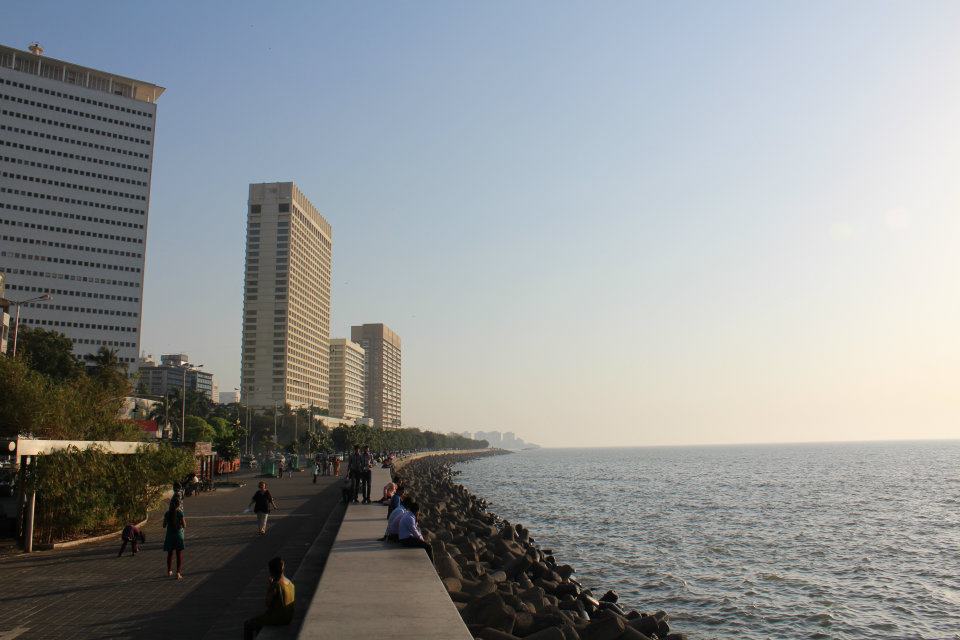
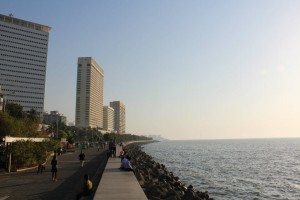
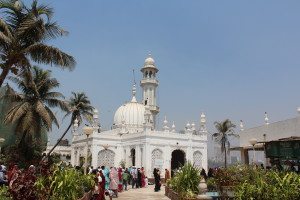
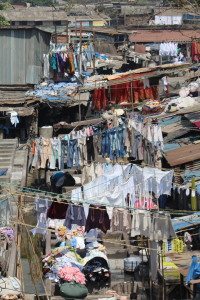
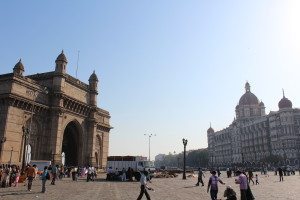
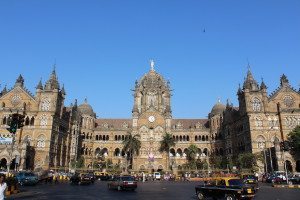
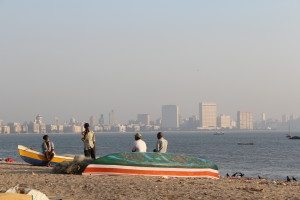



vada; fried gram-flour dumplings which were invented in southern India but perfected in Mumbai.
Not true the vada still tastes best down south 🙂
Ooooh controversy!! 😉 I’ve only been told that the vada was perfected in Mumbai – I’ve always expected that the original would be the best 🙂
My dad in law took vadas from here when he was visiting and he’s from Bombay 🙂
Wow – there is a lot about Mumbai here that I had no idea about! We head there in less than a month and I am very much looking forward to the visit!
Awesome! Please keep us posted about what escapades you get up to! How exciting! Thanks for stopping by! 🙂